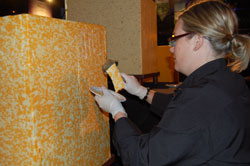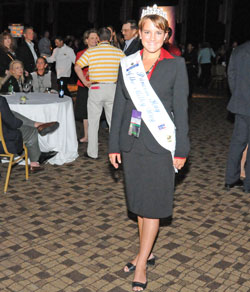According to a study released recently called the Wisconsin Cheese Plant Capacity and Future Milk Production report, increases in the state’s milk production may exceed the state’s ability to process it by 2012.
For years, milk production has lagged behind the statewide capacity of dairy processing plants, creating a deficit that was fulfilled by trucking in various forms of milk for the cheesemaking process, including condensed milk and nonfat dry milk. America’s Dairyland needs a large amount of milk to make its signature cheeses: in 2007 cheesemakers poured 24.5 billion pounds (2.8 billion gallons) of milk into their cheese vats.
Wisconsin milk production is growing. Both the number of cows and the amount each cow produces has increased in recent years. In 2007, Wisconsin cows produced 24.1 billion pounds of milk and 90 percent was made into cheese. If this increase continues, Wisconsin dairies could produce two billion more pounds of milk by 2012, Dr. Cropp estimates, positioning the state to reach its greatest peak in milk production in twenty years.
“The growth in Wisconsin’s milk production can be attributed to a positive business environment for the dairy industry. A recent survey of our own dairy producer members shows plans to invest $116 million this year alone in dairy building, expansion and modernization projects,” said Laurie Fischer, executive director of the Dairy Business Association.
According to the Wisconsin Cheese Makers Association, investments are occurring on the processing side as well. Three new cheese plants entered production this year alone, and several other makers upgraded facilities. Growing milk supplies could push plants across the state to peak capacity, according to John Umhoefer, executive director, Wisconsin Cheese Makers Association.




 Dairy Markets Week in Review
Dairy Markets Week in Review

 Tuesday evening selected attendees to the Republican National Convention were invited to an event in downtown Minneapolis at The Depot called
Tuesday evening selected attendees to the Republican National Convention were invited to an event in downtown Minneapolis at The Depot called